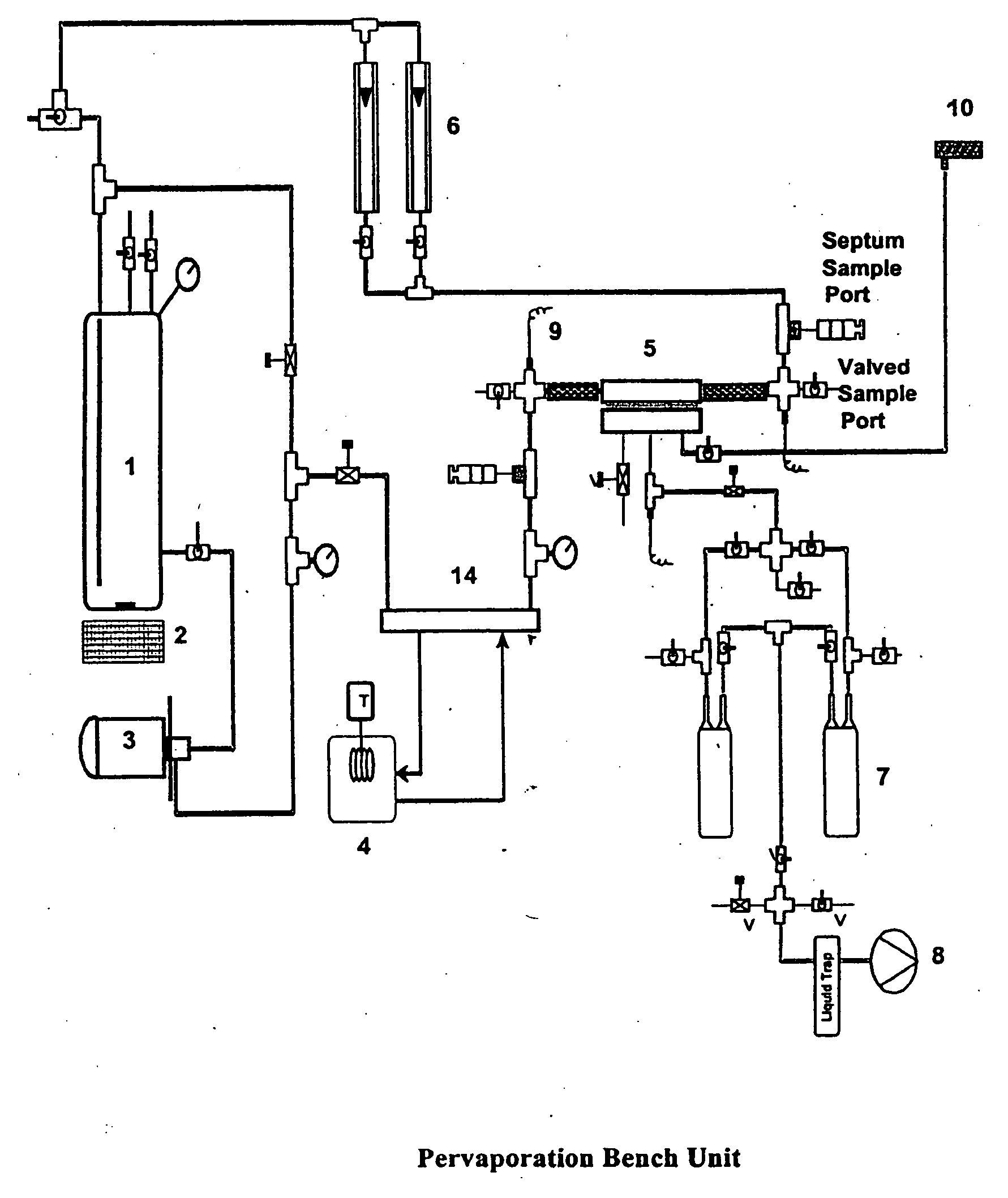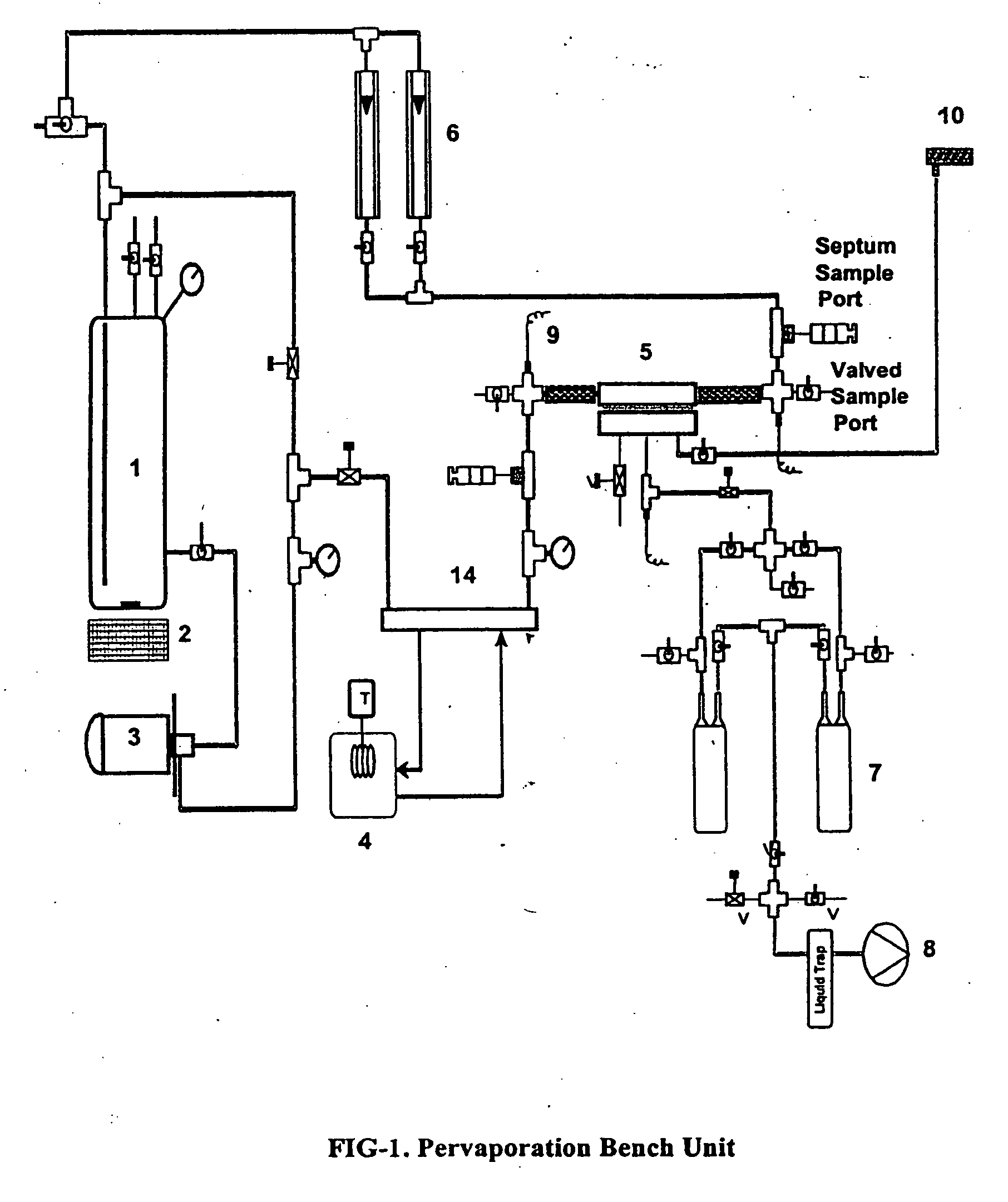Hydrophilic mixed matrix material having reversible water absorbing properties
- Summary
- Abstract
- Description
- Claims
- Application Information
AI Technical Summary
Benefits of technology
Problems solved by technology
Method used
Image
Examples
example 1
[0031] To a granular PVA, water was added to yield PVA concentration in the range of 5-10 wt %. Clear and homogenous PVA solutions were obtained upon heating the mixture for 5 hours in an oven kept at 100° C. The solution was cooled to room temperature before use. A predetermined amount (0.15-1.00 g.) of cross linking agent (acid or aldehyde) was added to 25-30 g. of the polymer-containing solution and shaken well until the cross linker completely dissolved.
[0032] Next, 2-10 g. of a clear aqueous solution containing 21.5 wt % of nano-sized silicon dioxide particles was added and shaken well to obtain a clear mixed matrix solution. In some formulations a 10-15 wt % aqueous amine polymer solution was added and shaken well until all the components were homogeneously mixed. (Studies revealed that mixing is very important in order to a void phase separation and obtain clear and homogenous membranes.) Depending on the final membrane thickness required, the mixtures were diluted by additi...
example 2
[0034] Homogenous membranes using PVA were prepared according to the general method described in example 1 with the following modifications: Membranes were prepared without the addition of a second polymer. Maleic acid was employed as across linking agent with the cross linking carried out for either 30 or 90 minutes at 150° C. Dehydrations of IPA / water mixtures was carried out according to the procedure outlined above and results, flux vs. feed temperature, given in Table 1.
TABLE 1Effect of SiO2 and Crosslinking Timeon dehydration of IPA for example 2.Feed concentration: IPA 80 wt. % and water 20 wt. %Permeate concentration: 97-98 wt. % water0 wt. % SiO230 wt. % SIO230 wt. % SiO2Feed30 min. cross30 min. cross90 min. crossTemperaturelinkinglinkinglinking(° C.)Total flux g / m2 / hrTotal flux g / m2 / hrTotal flux g / m2 / hr—75124079100455014618177602093201377038949521375550670261
[0035] The effects due to increase in the feed temperature and membrane cross linking time were on the expected li...
example 3
[0037] Membranes were prepared according to the general procedure described in the example 1 with the following modification: Composite mixed matrix membranes were prepared by casting PVA / SiO2 / polyallylamine hydrochloride polymer solution on Gelman Sciences backing. Table 2 lists the results obtained on carrying out the dehydration of a feed stream containing 90 wt. % IPA and 10 wt. % water mixture by pervaporation. The presence of poly (allylamine hydrochloride) in the membrane has two effects: a) it imparts flexibility to the mixed matrix material and b) it results in increasing the hydrophilic nature of the membrane. As a result, the water flux increased as compared to results shown in table 1 despite a decrease in the feed water concentration from 20 wt. % to 10 wt. %.
[0038] All had been cross linked for 30 minutes.
TABLE 2Dehydration Results of Example 3FeedFluxFluxPermeateTemperature(g / m2 / hr.)(g / m2 / hr)water° C.IPA fluxWater fluxconcentration401025696.3501235797.4601754197703...
PUM
| Property | Measurement | Unit |
|---|---|---|
| Temperature | aaaaa | aaaaa |
| Temperature | aaaaa | aaaaa |
| Fraction | aaaaa | aaaaa |
Abstract
Description
Claims
Application Information
 Login to View More
Login to View More - R&D
- Intellectual Property
- Life Sciences
- Materials
- Tech Scout
- Unparalleled Data Quality
- Higher Quality Content
- 60% Fewer Hallucinations
Browse by: Latest US Patents, China's latest patents, Technical Efficacy Thesaurus, Application Domain, Technology Topic, Popular Technical Reports.
© 2025 PatSnap. All rights reserved.Legal|Privacy policy|Modern Slavery Act Transparency Statement|Sitemap|About US| Contact US: help@patsnap.com


